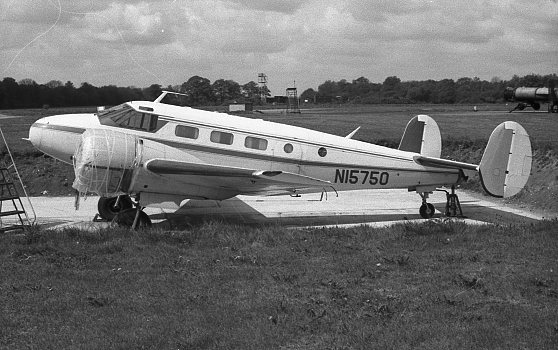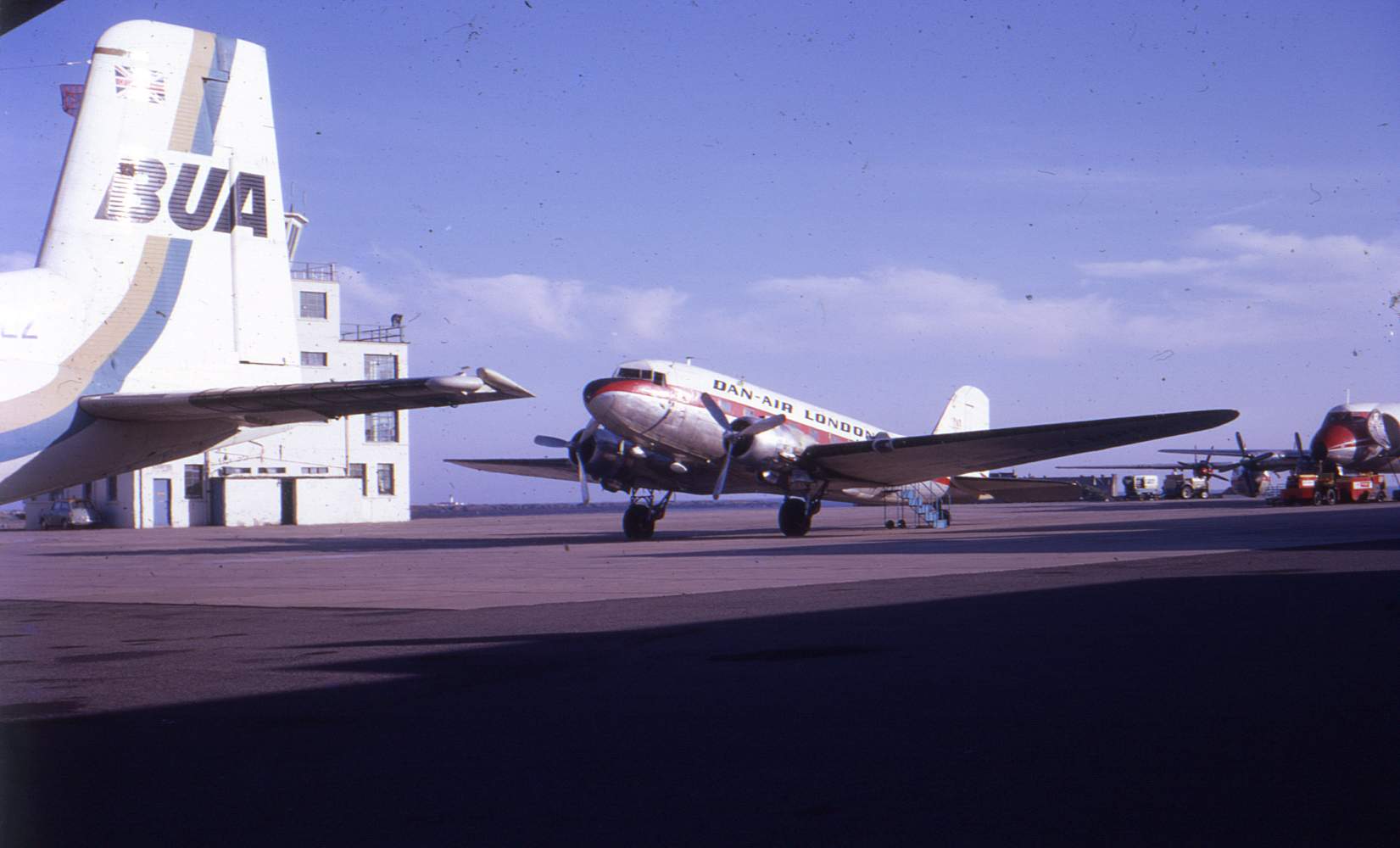In the early 1970s Dan Air Engineering’s base at Lasham held many treasures. The airline’s managers were amazingly tolerant of a teenager with a camera and many happy hours were spent wandering around Dan Air’s various exotic properties: Ambassadors, Dakotas, Comets, a DC-7, a Bristol Freighter. Amongst the larger craft there was a rather sorry-looking US-registered Beech 18 which appeared to have been towed out of the hangar mid-service. The engines and the passenger door were covered with plastic sheeting but it was all flapping wildly in the spring winds. Various papers were spilling out of the aircraft and scattering away across the grass. I picked-up a couple of soggy items of litter but it was only later that I dried them out and was able to read the contents. They appeared to be elements of a ‘start your own airline’ route map for the light freight outfit Sagittair.
Several years later, I dug out the documents while I was writing a dissertation on cross-channel air freight operations. With the advantages of hindsight, I was able to follow the trajectory of Sagittair between 1969 and the airline’s eventual demise in autumn 1972. Although only a brief operational window, the genealogy of the airline has expanded over the years, sometimes via a rather tenuous thread, to Air Bridge Carriers, Elan Air, Hunting Cargo, Air Contractors and, ultimately, ASL Airlines – a company which continues to operate in the 2020s.

Sagittair’s history offers an interesting glimpse of a brief period when Heathrow Airport permitted the operation of small, rather erratic twin-engined freight aircraft amidst the more serious hardware. The main operation eventually moved to East Midlands and it would be the early 1980s before Eastern Airways dared to introduce a DC-3 schedule into Heathrow’s hectic itinerary. Having personally experienced sitting in a DC-3 cockpit during a daytime approach to London Airport between the big jets, I can sympathise with the Captains faced with Air Traffic Control requests to wring 150 knots from ancient propliner twins!
The wider story of Sagittair throws light on the amazing life and career of its founder, Stephen Quinto, who was involved in many aviation enterprises but also contributed to medical chemistry, architectural design and the arts. I have expanded on some of these achievements using news data from the Miami Herald, Beech 18 data from www.goodall.com.au, aviation data from contemporary Air Britain and LAAS publications. The main section on Sagittair relies heavily upon information published in an excellent article by Tony Merton Jones in Propliner #122, Spring 2010 plus British Independent Airlines 1946-1976, also by Tony Merton Jones.
Hits: 200

